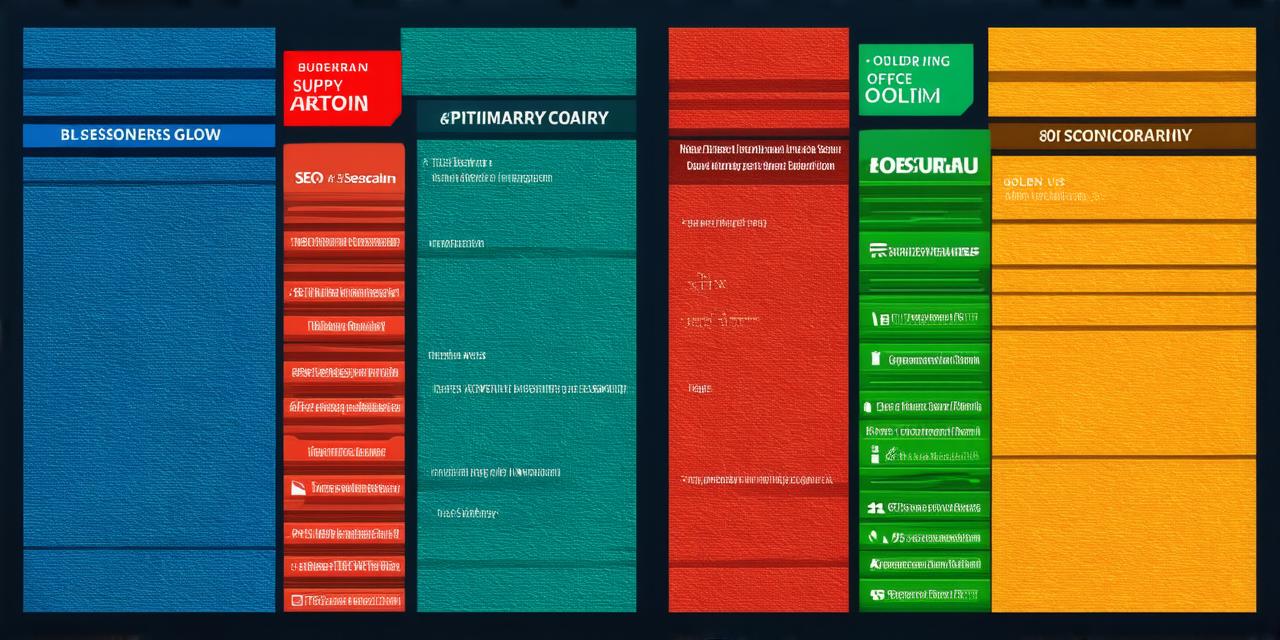What are the advantages and disadvantages of vertical integration and outsourcing for businesses?
Vertical Integration
: An Overview
Vertical integration is a strategic approach in which a company brings different stages of production in-house, from raw materials extraction to finished product distribution. This means that the company performs all the necessary tasks involved in producing and delivering its products or services, rather than relying on external suppliers or contractors.
There are several advantages to vertical integration, including:
- Control over quality and costs: When a company performs all the stages of production in-house, it has greater control over the quality and cost of its products or services. This can lead to significant cost savings, as well as higher levels of consistency and reliability in product performance.
- Improved competitiveness: Vertical integration allows companies to differentiate themselves from their competitors by offering unique products or services that cannot be easily replicated. This can help the company gain a competitive edge in its market.
- Reduced dependence on external suppliers: By bringing production in-house, companies can reduce their dependence on external suppliers and contractors, which can be a source of risk and uncertainty. This can also provide greater control over supply chain logistics and reduce the potential for disruptions caused by external factors such as price fluctuations or supplier defaults.
- Better access to proprietary technology and expertise: When companies perform all stages of production in-house, they have direct access to the proprietary technology and expertise required to develop and manufacture their products or services. This can help them stay ahead of the curve in terms of innovation and product development.
Despite these advantages, vertical integration also has its drawbacks, including:
- High initial investment costs: Vertical integration typically requires significant upfront investment in new facilities, equipment, and technology. This can be a challenge for small or medium-sized businesses that may not have the resources to make such investments.
- Limited scalability: As production becomes more complex and specialized, it can become difficult to scale operations effectively. This can limit the company’s ability to respond quickly to changes in demand or to take advantage of new market opportunities.
- Potential for inefficiencies: When a company performs all stages of production in-house, there is a risk of inefficiencies and duplication of effort. This can lead to higher costs and slower production times, particularly if the different stages of production are not properly coordinated or integrated.
- Increased risk of legal and regulatory issues: Vertical integration can expose companies to a range of legal and regulatory risks, including antitrust violations, labor disputes, and environmental liabilities. This can be a challenge for businesses that may not have the expertise or resources to navigate these complex legal and regulatory landscapes.
Outsourcing
: An Overview
Outsourcing
is the practice of contracting with external suppliers or service providers to perform specific tasks or functions on behalf of a business. This can include everything from manufacturing and logistics to marketing and IT services.
There are several advantages to outsourcing, including:
- Cost savings:
Outsourcing
can help businesses reduce their costs by leveraging the expertise and economies of scale of external suppliers or service providers. This can lead to significant cost savings, particularly in areas such as labor and materials.
- Access to specialized skills and expertise: By contracting with external suppliers or service providers, businesses can access a wide range of specialized skills and expertise that may not be available in-house. This can help them stay ahead of the curve in terms of innovation and product development.
- Improved efficiency:
Outsourcing
can help businesses improve their efficiency by freeing up internal resources to focus on core competencies and strategic initiatives. This can lead to faster production times, better quality products, and improved customer satisfaction.
- Flexibility and scalability:
Outsourcing
provides businesses with the flexibility to scale operations up or down as needed, without having to make significant investments in new facilities or technology. This can help them respond quickly to changes in demand or to take advantage of new market opportunities.
Despite these advantages, outsourcing also has its drawbacks, including:
- Loss of control over quality and costs: When a company relies on external suppliers or service providers to perform specific tasks or functions, it may lose some control over the quality and cost of its products or services. This can lead to higher costs, lower levels of consistency, and greater risk of disruptions caused by external factors such as supplier defaults or price fluctuations.
- Limited access to proprietary technology and expertise: When companies outsource production or other functions, they may have limited access to the proprietary technology and expertise required to develop and manufacture their products or services. This can make it more difficult for them to stay ahead of the curve in terms of innovation and product development.
- Dependence on external suppliers:
Outsourcing
can create a dependence on external suppliers, which can be a source of risk and uncertainty. This can also limit the company’s ability to control supply chain logistics and respond quickly to disruptions caused by external factors such as supplier defaults or price fluctuations.
- Cultural and language barriers: When companies work with external suppliers or service providers from different countries or cultures, there may be communication and cultural barriers that can lead to misunderstandings and delays. This can be particularly challenging in areas such as IT services, where technical expertise is essential.
Real-Life Examples of
Vertical Integration
and
Outsourcing
To better understand the advantages and disadvantages of vertical integration and outsourcing, let’s examine some real-life examples of companies that have successfully implemented one or the other strategy.

Vertical Integration
- Toyota: Toyota is a prime example of a company that has successfully implemented vertical integration. The company performs all stages of production in-house, from raw materials extraction to finished product distribution. This has allowed Toyota to control quality and costs, as well as to develop proprietary technology and expertise that has helped it stay ahead of the curve in terms of innovation and product development.
- Amazon: While Amazon is primarily known for its e-commerce platform, the company has also pursued vertical integration in areas such as logistics and fulfillment. By performing these functions in-house, Amazon has been able to improve efficiency, reduce costs, and enhance customer satisfaction.
- Apple: Apple is another example of a company that has successfully implemented vertical integration. The company performs all stages of production in-house, from raw materials extraction to finished product distribution. This has allowed Apple to develop proprietary technology and expertise that has helped it stay ahead of the curve in terms of innovation and product development.
Outsourcing
- Nike: Nike is a prime example of a company that has successfully implemented outsourcing. The company contracts with external suppliers and service providers to perform specific tasks or functions on behalf of the business. This has allowed Nike to reduce costs, access specialized skills and expertise, and improve efficiency.
- Google: While Google is primarily known for its search engine and other online services, the company also outsources production and other functions to external suppliers. By doing so, Google has been able to focus on core competencies and strategic initiatives, while leveraging the expertise and economies of scale of external suppliers.
- Microsoft: Microsoft is another example of a company that has successfully implemented outsourcing. The company contracts with external suppliers and service providers to perform specific tasks or functions on behalf of the business. This has allowed Microsoft to reduce costs, access specialized skills and expertise, and improve efficiency.
Conclusion
In conclusion, both vertical integration and outsourcing have their advantages and disadvantages. The choice between these two strategies will depend on a range of factors, including the nature of the business, its resources, and its strategic goals. Businesses that are looking to control quality and costs, as well as to develop proprietary technology and expertise, may be better suited to vertical integration. Those that are looking to reduce costs, access specialized skills and expertise, and improve efficiency may be better suited to outsourcing. Ultimately, the key to success will be finding the right balance between these two strategies, and leveraging the strengths of both internal and external resources to achieve the desired outcomes.
